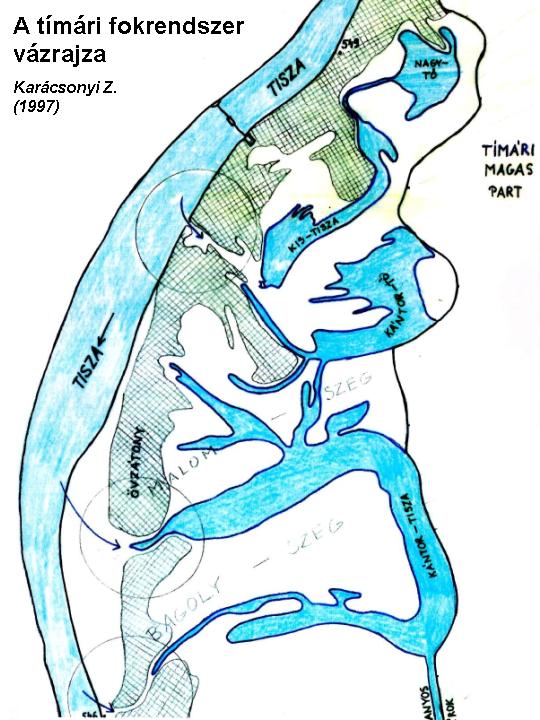The key for the traditional floodplain management: the notch system

Role of notches in the water regime of rivers
The notches can be describes as artificial channels - penetrating through the downstream end of the natural banks (dunes) built by the river sedimentation - that collect and guide back the water from the runoff area, starting from the deepest points and connecting them with each-other and also with the river-bed. The consequence of this the water-flow in the notches was two directional: inwards (towards the runoff area) when floods occurred, and outwards (towards the river-bed) after the floods. The smaller-larger inpondments are consequently integral parts of the notch system, since all water bodies of a give runoff area were connected (filled and depleted) through the notches, the water was moved according to the changes in the river water level. This can be considered as a vascular system where the arteries and veins carrying the blood (i.e. water) are not distinguished in space but in time.
The effects of the notch system are as follows:
it rendered the extent and frequency of changes in runoff water level,
the sediments carried by the river remain in the notch so the coarser sediments are not transported to the runoff area,
the arable lands, forests, meadows etc. by the notches were freed from floods,
the buffering effect of the notches helped in the balancing of the river water regime (by counteracting the raise and sink (nowadays, due to the regulation the water level of the river vary most extremely),
the temporary floods complemented the short water reserves of the runoff areas,
the floodplains served as natural spawning and hatching grounds for fish stocks,
as indirect effect was the evaporation from the runoff waters which was resulting in precipitation on other areas of the Great Plains, and last but not least
the water management practice described above enabled the economic utilisation of the runoff area without altering its natural characteristics, consequently this activity was acting along instead of counteracting the "life" of the river.
The main concept behind the notch system is to connect the water bodies of the runoff areas into one unit enabling the water to move slowly but continuously into two directions (one at a time): to and from the river-bed. This water system is based on the natural "breathing" (i.e. flood and shrinkage), of the river. The main ways of floodplain management were: fishing, extensive animal husbandry, forestry, horticulture (tolerant orchards), crop production.
